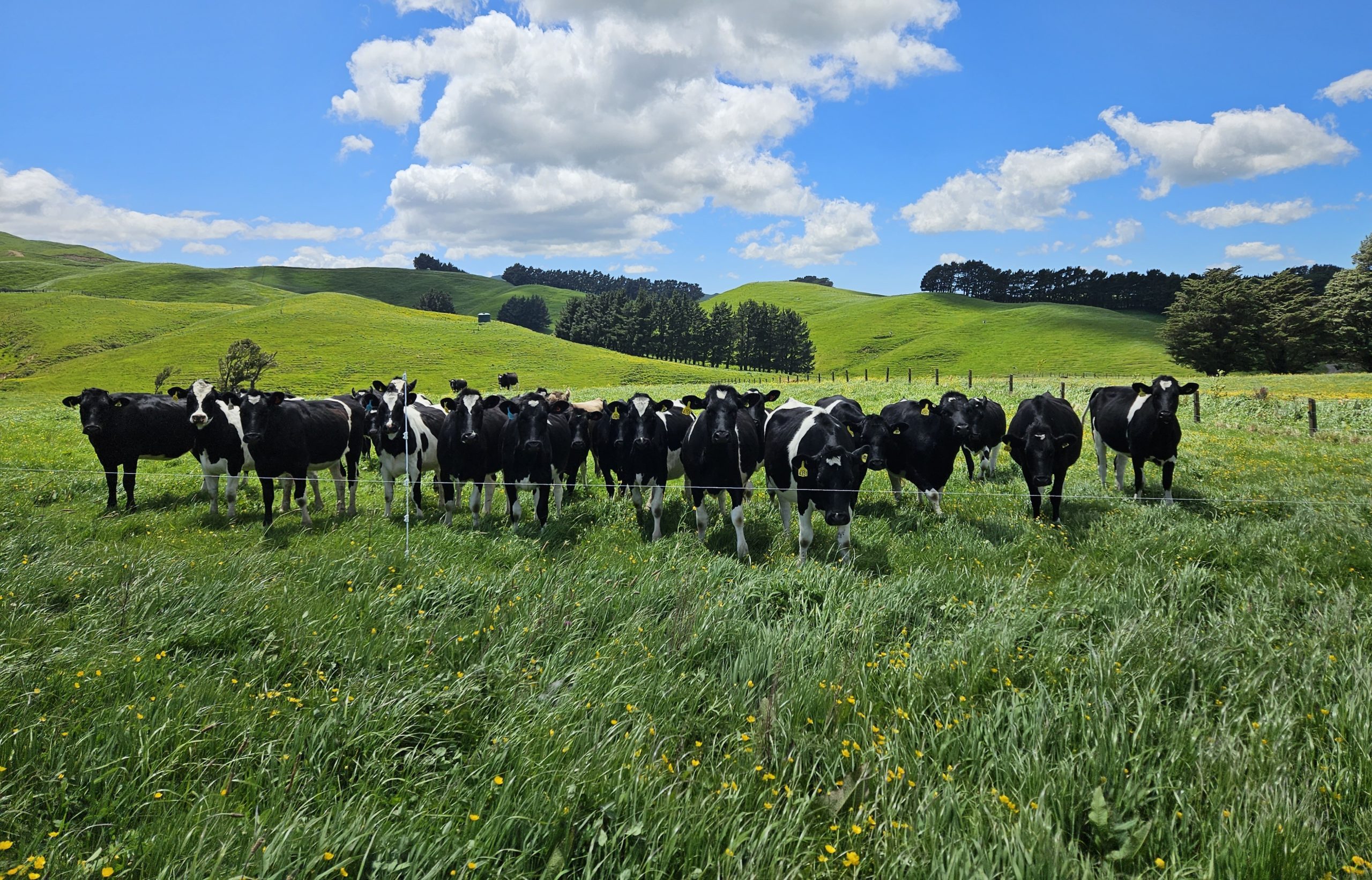As we head into summer, “preparation” is key for effectively grazing dairy replacements. With rising temperatures and less predictable rainfall, we anticipate reduced pasture growth and quality. Therefore, making full and efficient use of spring pasture is crucial. As alluded to in our previous newsletter, maximizing spring pasture is essential in providing quality supplement that can be used in summer or if not required, stored for winter.
For reference, here are typical dry matter percentages and kilograms of DM per bale:
DM% DM silage kg/bale
Baleage 35-40 130-180
Hay – small bales 85 15-20
Hay – round bales 85 150-250
“Grass grows grass.”
Strategic planning to ensure feed supply matches demand will allow us to continue meeting pre-grazing leaf stage and post-grazing residual targets, encouraging optimal pasture growth. “Three leaves after grazing” is a term used in pasture management, particularly for perennial ryegrass, to indicate the optimal time for the next grazing. Grazing when the pasture has developed three new leaves per tiller maximises future growth, yield, and quality, while also allowing the plant to recover. By extending pasture rotations to 25-30 days over summer, plants have increased time to recover and generate new leaves. Longer rotations also benefit clover growth, as clover thrives in higher temperatures.
Be mindful that overgrazing can lead to pasture degradation and increases the risk of parasitic infestations, which are more prevalent in summer. Conversely, undergrazing can harbour facial eczema spores in longer, decaying litter at the base of pastures, especially during warm, humid conditions later in summer.
To maintain pasture productivity and health, regularly assess fertiliser programs to determine nutrient levels, and plan a targeted application for the climatic conditions to avoid over-fertilising.
High-quality feed crops in summer can be useful for maintaining weight gains. Some examples of these used by New Zealand Grazing Company growers are:
Chicory: A leafy herb with deep taproots that help it thrive in dry conditions. It is highly palatable and provides high-energy feed from spring through to autumn.
Plantain: A good option for improving pasture biodiversity and can be managed alongside perennial ryegrass. Certain varieties can also help decrease nitrogen loss.
Turnips: A fast-maturing crop that can bridge summer feed gaps. High-energy feed with leafy tops that provide protein. Best for regions with milder summers.
Forage Brassicas: Fast-growing, high-energy feed with flexible grazing options. Varieties like forage rape are excellent for summer and autumn feed gaps, while kale offers winter resilience.
For optimal utilisation of any crop, heifers should also be fed a good source of fibre, such as hay or silage, to support their developing rumen. A crop should not make up more than 70% of the diet.
Be aware that Chicory and, particularly, Plantain can potentially cause bloat. To prevent this, do not allow hungry cattle to gorge themselves. Feed supplement first before moving onto high-risk pasture and avoid turning cattle onto pastures wet with dew or after recent rain. Using bloat oil in a dosatron in troughs is a recommendation. Brassica crops can accumulate high levels of nitrate, as can crops with high applications of nitrogen, causing nitrate poisoning. Test the nitrate levels in high-risk feeds, particularly after periods of stress like drought followed by rain, cold snaps, or cloudy days. Best practice is to feed such crops in the afternoon to allow plants to convert nitrates into protein using sunlight.
Every farmer should have a comprehensive summer management plan. This is crucial for ensuring that livestock achieve their target growth rates, which in turn helps maintain a farm’s profitability. In extreme weather conditions consider reducing stock numbers to focus on those that will make a return when fed well. Palm Kernel Extract (PKE) with its high crude protein of 15.5-17%, can be a cost-effective supplement to help achieve such results when pasture is scarce.
Utilise all available resources to meet your objectives, and we hope you have a successful and rewarding summer.
Words By Amanda Seddon
Service Manager: Manawatu and Hawkes Bay
Data Source: Dairy NZ

